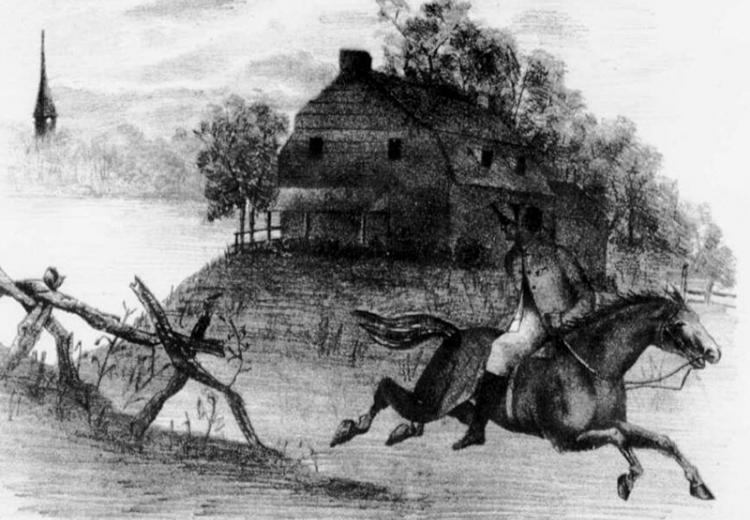Why Do We Remember Revere? Paul Revere's Ride in History and Literature

Sheet Music for Paul Revere's Ride By Webb Miller, 1884.
In his account of his famous ride, Paul Revere described the impetus for his journey: "…I was sent for by Dr. Joseph Warren, of said Boston, on the evening of the 18th of April, about 10 o'clock; when he desired me, 'to go to Lexington, and inform Mr. Samuel Adams, and the Hon. John Hancock Esq.'" Though the lantern signal from Christ Church had been Revere's idea, he never mentions seeing it, though he does go on to say, "I set off, it was then about 11 o'clock, the moon shone bright." Anyone who learned the story from Henry Wadsworth Longfellow heard it told a little differently. Virtually all students, at one point or another in their schooling, are exposed to Longfellow's ballad, "Paul Revere's Ride." How accurate is it? Is it responsible for Revere's ride achieving such iconic status?
Provide the opportunity for your students to think about the answers to these and other questions as they read primary and secondhand accounts of events during the American Revolution. Extend the study of American Revolutionary history into literature by discussing how Revere's ride has been dealt with in poems by Longfellow and others.
Guiding Questions
What are the essential differences between Longfellow's account of Paul Revere's ride and historical fact?
Why does Revere's ride occupy such a prominent place in the American consciousness?
Learning Objectives
Analyze the circumstances prior to, during, and after Paul Revere's ride.
Examine the differences between Longfellow's poem and the historical event.
Determine possible motivations for Longfellow's writing the poem.
Evaluate hypotheses that might explain why we remember Paul Revere's ride as we do.
